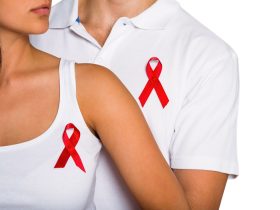Sexually transmitted infections (STIs) are a prevalent sexual health concern, transmitted primarily through sexual contact, including vaginal, anal, and oral sex.
While many STIs are preventable, the importance of awareness and regular testing cannot be overstated. Let’s delve into common STIs, their transmission, testing procedures, and treatment options!
What Are STIs?
STIs, formerly known as sexually transmitted diseases (STDs), can be contracted through various forms of sexual contact.
They are highly common, with the Centers for Disease Control and Prevention (CDC) reporting over 2 million cases in 2018. STIs can spread through penis-and-vagina sex, anal sex, oral sex, and occasionally, open-mouthed kissing.
Common STIs
Anyone who is sexually active is at risk of contracting an STI. Some common STIs include:
- Herpes
- Pubic Lice (Crabs)
- Chlamydia
- Gonorrhea
- Human Papillomavirus (HPV)
- Scabies
- Syphilis
- Hepatitis B
- Pelvic Inflammatory Disease (PID)
- HIV
- Molluscum Contagiosum
- Trichomoniasis
Each STI has distinct symptoms, causes, risk factors, and treatment protocols.
How STIs Are Transmitted
Sexually Transmitted Infections (STIs) can be transmitted through several routes, each involving the transfer of bacteria, viruses, or parasites from an infected individual to a healthy person. Here are the primary modes of transmission:
- Direct Contact with Lesions or Sores: STIs such as herpes and syphilis are often spread through direct contact with infectious sores or lesions present on the skin or mucous membranes.
- Close Personal Contact: Certain parasitic STIs, like pubic lice, can be transmitted through close physical contact, including non-sexual interactions where infested clothing or bedding is shared.
- Exposure to Infected Blood: Bloodborne STIs, such as HIV and hepatitis B and C, can be transmitted through direct exposure to infected blood. This can occur through blood transfusions, sharing needles, or other forms of blood contact.
- Contact with Vaginal Fluid or Semen: STIs like chlamydia, gonorrhea, and trichomoniasis are spread through contact with infected vaginal fluids or semen during sexual activity.
- Sharing Needles: The use of shared needles for drug injection is a significant route of transmission for STIs like HIV and hepatitis. This is due to the direct introduction of infected blood into the bloodstream of a healthy individual.
Prevention Methods
Preventing the transmission of STIs involves taking steps to minimize exposure to the infectious agents present in bodily fluids such as vaginal secretions, semen, saliva, and blood.
Here are some effective strategies:
- Use Condoms or Dental Dams: Consistently using these barriers during sexual activity can significantly reduce the risk of contact with infectious fluids and lesions. Condoms are especially effective in preventing the transmission of many STIs, including HIV, chlamydia, and gonorrhea.
- Use Water-Based Lubricants: Oil-based lubricants can cause latex condoms to break, increasing the risk of STI transmission. Water-based lubricants are safer and help prevent condom degradation.
- Regular STI Testing: Regular screening is crucial, particularly before engaging with new sexual partners. Early detection and treatment of STIs can prevent their spread and reduce complications.
- Get Vaccinated: Vaccines are available for certain STIs, such as hepatitis B and human papillomavirus (HPV). Getting vaccinated can provide significant protection against these infections.
- Avoid Drug and Alcohol Use: Substance use can impair judgment and lead to risky sexual behaviors. Staying sober can help individuals make safer choices regarding sexual health.
- Take Precautions with Injecting Drug Users: If you or your partner are injecting drugs, using clean needles and avoiding needle sharing is essential to prevent bloodborne STIs like HIV and hepatitis.
Understanding Risk Factors and Prevention
Several factors can increase the risk of contracting STIs. It’s important to be aware of these factors and take appropriate preventive measures:
- Number of Sexual Partners: Having multiple sexual partners increases the risk of exposure to STIs. Practicing monogamy with a partner who has tested negative for STIs can reduce this risk.
- Sexual Practices: Certain sexual activities, such as anal sex, carry a higher risk of STI transmission due to the potential for tissue damage and exposure to bodily fluids.
- Age and Gender: Young people and women are often at higher risk for STIs. Young people may engage in riskier behaviors, and women have anatomical factors that increase susceptibility to certain infections.
- Socioeconomic and Cultural Factors: Limited access to healthcare, education, and preventive resources can increase STI risk. Addressing these disparities is important for effective prevention.
- Immune System Status: Individuals with weakened immune systems, such as those with HIV, are more susceptible to contracting other STIs. Maintaining good overall health and managing chronic conditions can help reduce this risk.
By understanding the modes of STI transmission and implementing effective prevention strategies, individuals can significantly reduce their risk of contracting and spreading these infections.
Regular testing, safe sexual practices, and informed decision-making are key components of maintaining sexual health.
Testing for STIs
Regular STI testing is crucial for sexually active individuals, especially those with new or multiple partners, or those exhibiting symptoms of an STI.
Although no test is infallible and some STIs may remain asymptomatic for long periods, testing remains a key strategy in managing and preventing STI transmission.
Doctors may test blood, urine, or other bodily fluids to detect STIs. If a test result is negative but symptoms persist or exposure is suspected, retesting is advised.
Treatment Options
Treatment for STIs varies depending on the type:
- Antibiotics: Effective for bacterial STIs like chlamydia, gonorrhea, syphilis, and trichomoniasis. It is essential to complete the full course and avoid sexual activity until treatment is complete.
- Antiviral Medications: Used for viral infections like herpes and HIV, these medications can prevent outbreaks and manage the infection, though they may not completely eliminate the risk of transmission.
- Lotions and Creams: Used for treating parasitic infections like pubic lice.
It’s crucial to consult a doctor for appropriate treatment and follow all medical advice to prevent transmission to partners.
Potential Complications
Untreated STIs can lead to severe complications, including:
- Eye inflammation
- Pregnancy complications
- Chronic pelvic pain
- Pelvic inflammatory disease (PID)
- Heart disease
- Arthritis
- Infertility
- Certain cancers
Early testing and treatment are vital to prevent these potentially dangerous outcomes.
Bottom Line
STIs spread through bodily fluids, skin-to-skin contact, and, in some cases, shared clothing or bedding. Regular screening for STIs is essential for sexually active individuals to prevent transmission and avoid serious complications.
Through following preventive measures and seeking timely medical advice, effective treatment can suppress or cure most infections, promoting better sexual health and well-being.
















Find Us on Socials